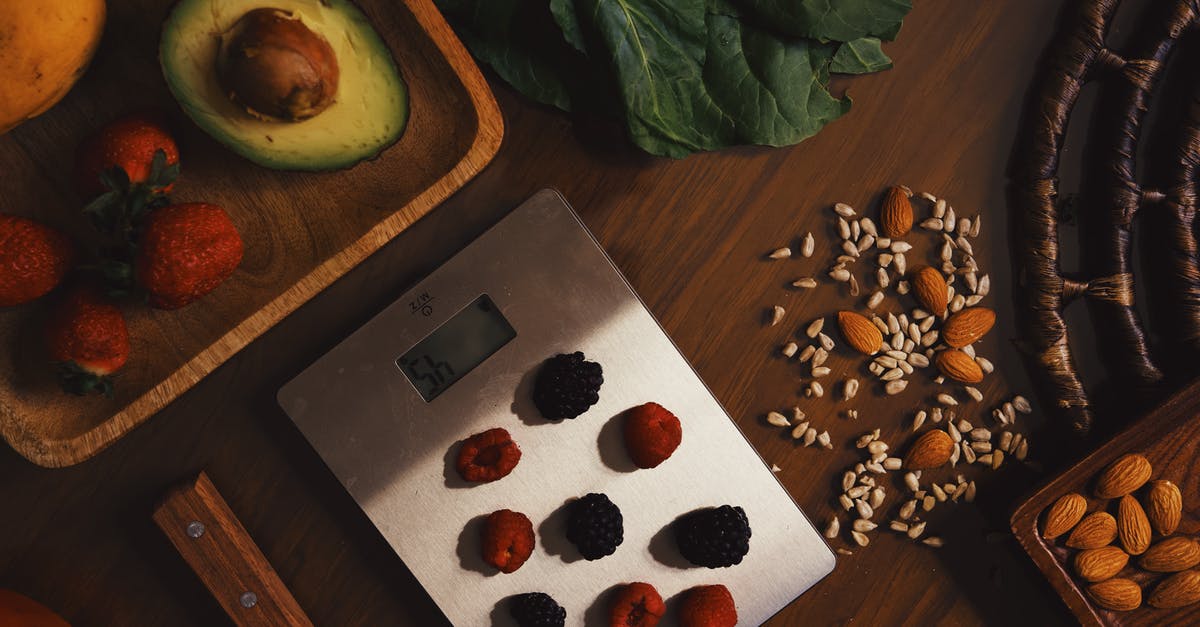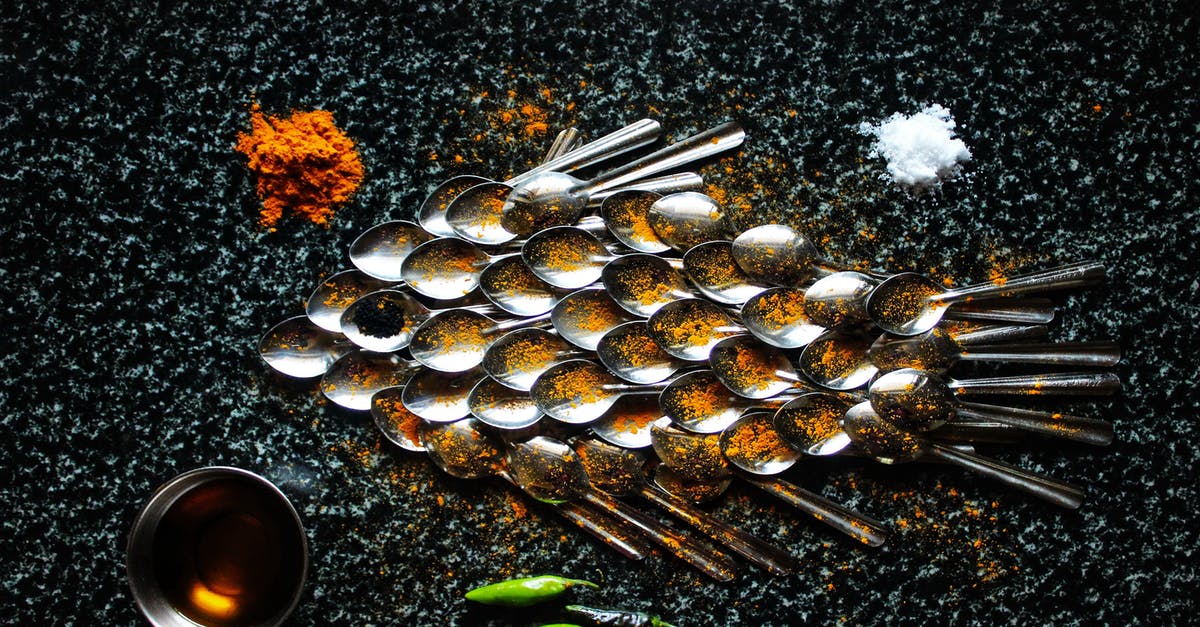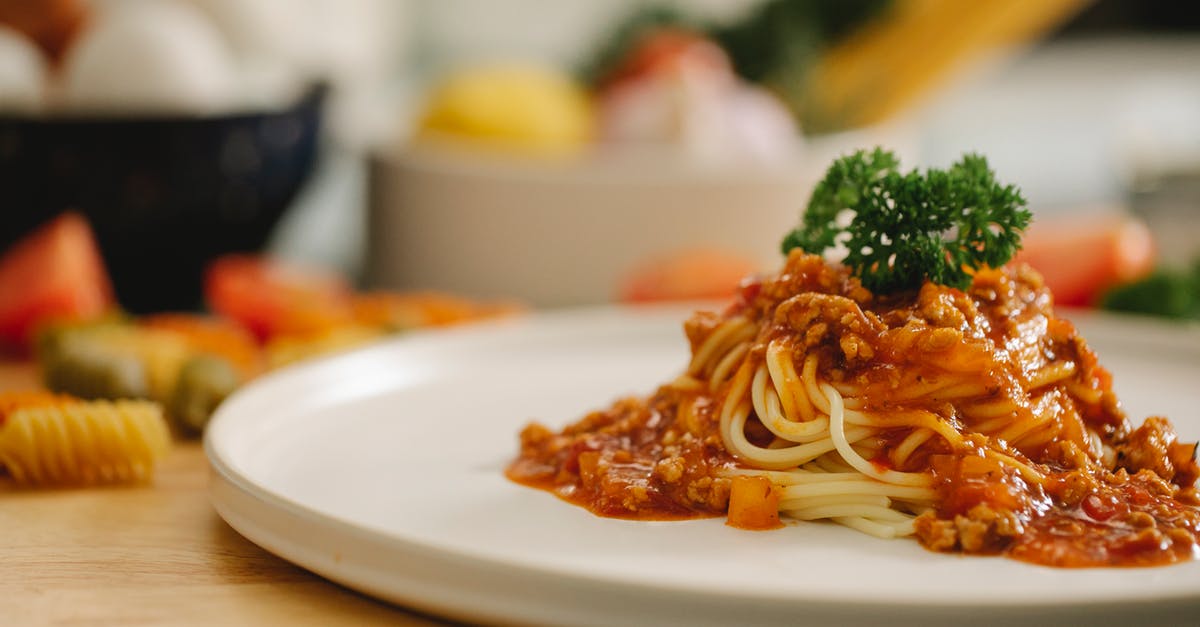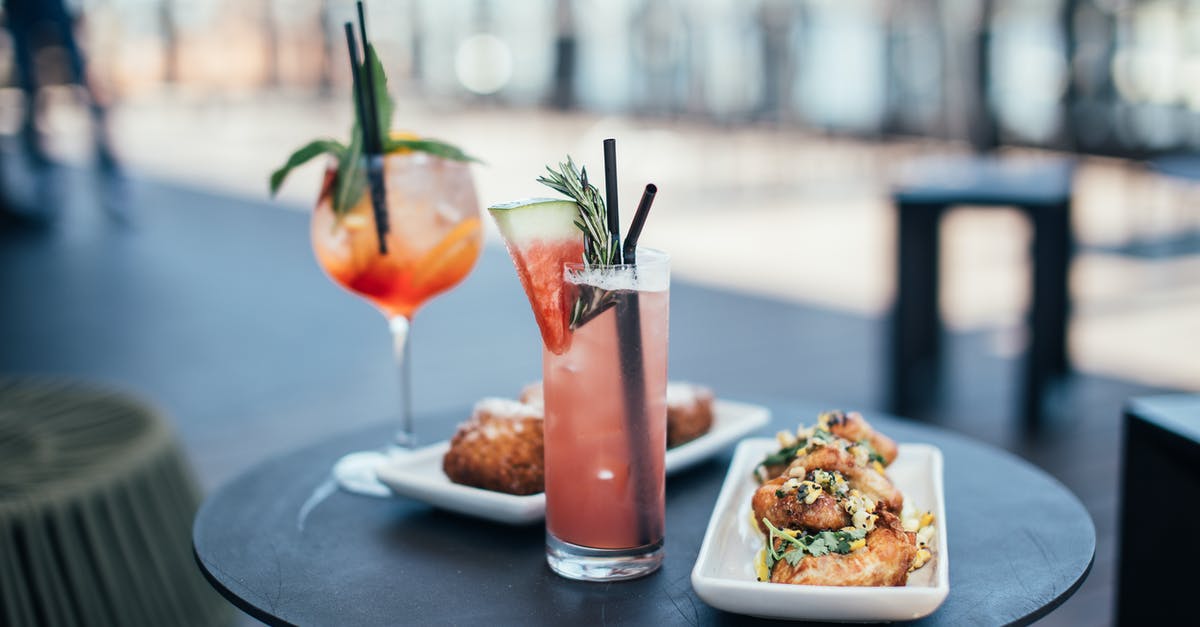How do I scale a recipe that calls for boiling off liquid?

I made a lamb ragu last night, but doubled the quantity for a large group. One of the steps called for 1.5 cups of red wine and then boiled it off. Doubling to 3 cups seemed entirely too much (once I'd already done it) and took quite a while to boil off. The recipe then called for 3 cups of chicken stock, which was again supposed to mostly boil off. 6 cups looked ridiculous, so I ended up using about 4, but it still seemed like too much. The 90 mins suggested wasn't long enough to boil the sauce down to a good consistency, but I had to serve it anyway. It was a bit watery, but tasted good.
So how do I scale quantity and cooking time in a recipe that calls for the liquid to boil away or boil down significantly? A linear scaling didn't seem to work well at all. Are there any good rules of thumb?
Best Answer
Agreed, scaling up sauces that require reduction can be tricky, but it actually reduces to a simple physics problem. First I'm going to give you the best solution and then the science behind it.
The solution is to use a larger, shallower pan and apply higher heat, while stirring more frequently. I usually go a quarter step up in heat on the stove; so, from medium-low I go to medium, and from medium to medium-high. Using your stove's ventilation fans may also help. If you're doubling the amount of liquid you reduce, you can assume roughly a 50% increase in time required to reduce it, following this advice. Normally, it would require doubling the time to reduce the sauce.
And no, you cannot reduce the amount of liquid... if you double the recipe you need to double the liquid too. The liquid is reduced to add flavor and body to your sauce. Doubling the spices and other ingredients without doubling wine and stock will yield a sauce that is too spicy, lacking in depth, and does not have enough volume. Alternately, if you double the stock and wine but do not reduce enough, you'll get a watery, bland sauce, because stock adds gelatin, which thickens the sauce.
If there's meat cooking in your reducing sauce: reduce the sauce until it needs only the suggested time to finish reducing, then cut the burner to the suggested power and cook for the suggested time. Using a higher temperature setting will overcook the meat, making it tough. Also, using a partially reduced sauce will impart more flavor to the meat; since the flavors are already somewhat concentrated before adding the meat, more will penetrate the meat. If this is a problem, break your recipe into normal sized batches and cook them on separate burners.
If you're concerned about estimated the right amount of time for a doubled recipe, you can reduce in the specified way before adding meat, then add meat and do it again.
Now the scientific explanation:
The principal problem here is the rate of evaporation. Let's break it down!
Liquid needs a lot of extra energy to transition from liquid to vapor, called the enthalpy of vaporization. For water, the energy required is 6 times what it took to heat it to the boiling point from room temperature. Once it hits the boiling point, it can't get much hotter until the liquid is almost completely gone. This means the rate of evaporation is mainly limited by hot fast you can input heat.
The rate of heat input is limited by the power supplied to the burner, but a second limit comes from the pan; the rate of heat transfer is proportional to surface area, thermal conductivity, and the temperature difference between two surfaces. Turning up the burner gets it hotter, increasing heat transfer, but the pot still needs to transfer that heat to a liquid, so using a broader and more conductive pot exposes more liquid to the heat. It also distributes the heat over a wider area, preventing the liquid from overheating as easily where it touches the pot. Stirring ensures the heat is evenly distributed, maximizing heat transfer (by increasing the temperature differential) and preventing over heating.
Evaporation is also impeded by a pressure and a high concentration of vapor above the surface. This concentration will be higher if there is liquid has less surface area (the same amount of liquid released into a smaller volume). So, the liquid out in a bigger pot increases the evaporation rate. The local concentration will be also higher if humidity is high (more water vapor in the air), and higher if there are no air currents to disperse the vapor boiling off. So, running vent fans and using a shallower pot will make it easier for the vapors to escape. A ventilation fan may also slightly reduce pressure, but that has more to do with weather. In industrial food processing, a vacuum may be used to evaporate liquids at a much lower temperature than normal. For example, this is how powdered and evaporated milk are made.
Finally, in a tall pot, escaping vapor may lose heat to the cooler walls of the pot as it rises, re-condensing and falling back down into the pot. If the pot is lidding, this is even more of a problem. For this reason, it is advisable to use an open, un-lidded pot. This effect can be used to evaporate away alcohol from a sauce while retaining the water content.
So, to double the rate of evaporation and maintain a constant reduction time, double the power supplied to the burner, and increase the surface area of the pot. Of course, you often can't double the burner power without burning the liquid... so you're left with using a larger pot and increasing the heat as much as you think you can get away with. If you stir enough and scrape the pot's sides down, you can get away with quite a bit.
Pictures about "How do I scale a recipe that calls for boiling off liquid?"



Quick Answer about "How do I scale a recipe that calls for boiling off liquid?"
Probably the most correct answer is that you need to scale your boiling speed - so just double all of the ingredients, and double the power of your burner, and you'll boil off double the water.How do you reduce liquid in a recipe?
Reduction is performed by simmering or boiling a liquid such as a stock, fruit or vegetable juices, wine, vinegar, or a sauce until the desired concentration is reached by evaporation. This is done without a lid, enabling the vapor to escape from the mixture.Can all recipes be scaled up or down?
Some recipes are easy to scale up or down. You simply multiply or divide the ingredients to get the new yield; for example, doubling everything to get twice as many servings, or halving everything to get half as many. But not every recipe is so straightforward, and there are some considerations to keep in mind.What is the process used to scale up a formula?
Write down the quantities of all the different ingredients. Divide all the quantities by the number of people the recipe is for. You now have the quantity of each ingredient for a 1 person recipe. Multiply these quantities by the number of people you want to cook for.Do you boil or simmer to reduce liquid?
A good reduction takes a fair amount of time, and it's ideal to simmer, rather than boil. Too-high heat can cause the sauce to over-reduce and/or become bitter.How To Scale Recipes in Brewfather (aka I have a 20 gal kettle and my recipes are for 5 gal)
More answers regarding how do I scale a recipe that calls for boiling off liquid?
Answer 2
Probably the most correct answer is that you need to scale your boiling speed - so just double all of the ingredients, and double the power of your burner, and you'll boil off double the water. You'd probably also want to double the surface area & burner surface area so that boiling off liquid twice as fast didn't turn into a ridiculously fast rolling boil and/or an explosion at the limit.
Since this may not be feasible - especially on a home stove, and definitely infeasible at large scalings, I'd recommend that you first concentrate the liquid by boiling it alone, and only then add it to the final product and boil for the recommended time.
In order to match the recipe most closely, you don't want to decrease the amount of liquid because then you won't get as richly flavored final product. Additionally, you don't want to scale your boiling time (of the boiled mixture from the recipe) because then in general you will overcook other ingredients.
So what I'd do to double a recipe is take double the amount of liquid, say wine, and boil the wine straight on the stove for the full amount of time that is called for in the recipe, then add the concentrated wine to the recipe in place of wine and again boil it for the full amount of time that is called for in the recipe. This way you'll start with double the liquid, get double the boiling time, and hence double the water boiled off, so the correct amount of water remaining, and the correct concentration of the liquid. You'll also get the correct amount of boiling time for other ingredients as called for in the recipe.
Answer 3
My recommendation would be moving the whole operation to a much wider pan with a larger surface area. This will allow things to boil down more quickly, and might help with the time overkill issue. It will also make the larger quantities look a little more manageable.
Answer 4
Another alternative would be to add some wine to the dish, so you can get the solvent qualities of the alcohol, while reducing the rest of the wine in another pan to get the concentrated flavor.
But generally, the rule is that you need to scale up the surface area of the liquid that you're reducing in linearly with the volume to be reduced. (so if you double the volume, you need a vessel about 41% wider).
Answer 5
If a whole multiple of the original recipe is intended, making n recipes on n burners is a reliable way to circumvent the guesswork.
Sources: Stack Exchange - This article follows the attribution requirements of Stack Exchange and is licensed under CC BY-SA 3.0.
Images: LEONARDO VAZQUEZ, Dibakar Roy, Klaus Nielsen, Rachel Claire
